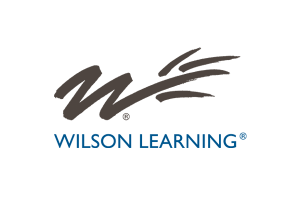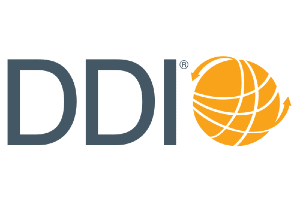A functional organization requires capable and engaged leaders at every level; from senior executives to front-line managers, engaged leaders can elevate daily operations and accelerate big-picture initiatives. Yet one of the main challenges learning and development (L&D) organizations face is tailoring training to leaders at different levels. Raising great leaders doesn’t happen by accident. It requires structured and individualized training throughout a leader’s career.
The task of creating individualized training, especially at scale, can be an intimidating undertaking. AllenComm recently partnered with a large manufacturing organization of approximately 100,000 employees to help them bridge the gaps in their leadership training. The goal? Renovating an outdated leadership development strategy that wasn’t working to increase leader engagement.
The status-quo training structure was disconnected, focusing on expert content purchased from several different suppliers or developed internally. Learners reported that training felt sporadic and was often irrelevant to their work or team, calling training “random acts of learning.” They became dispassionate about leadership development and didn’t make time for training. Priorities needed realignment.
Aligning Development Objectives With Business Initiatives
A change in the executive L&D team resulted in a reevaluation of the organization’s training strategy. A motivated and ambitious leader saw the old program lacked measurable impact and that training material was often generic and unrelated to the goals of the company. So, they began making a case with stakeholders that a fresh approach was needed. The team then approached AllenComm with the goal of creating the best and most effective leadership program. Both teams were eager for the challenge.
As the project began, it became clear that up-front alignment would be essential to the eventual success of the program. The project had many stakeholders, including C-level executives, who each had their own understanding of what should be prioritized. One leader commented: “We knew we had to be aligned on the training objectives, but we also had to make sure that our objectives were in sync with the organization’s business initiatives. If the training didn’t relate to what the business would be doing, the program would lose its relevance.”
To build consensus on the development objectives, AllenComm facilitated a comprehensive analysis of the leadership capabilities valued by the organization.
Understanding the Needs of Different Leaders
What became clear in that analysis was that each leader, in varying levels and roles within the organization, prioritized capabilities differently. To make each leader effective in their role, AllenComm recommended unique learner journeys with experiences to develop prioritized capabilities for each level or tier of leadership.
To develop these personalized learner journeys, a leadership matrix was created that defined the type of leader, such as:
- Personal leader.
- First-level leader.
- Mid-level leader.
The matrix also defined which training modalities would be most helpful for different types of leaders. For example, first-time leaders would be assigned self-paced web-based training that would cover the basics, followed by a scheduled cohort workshop. The program included many modalities like:
- Web-based training.
- Instructor-led workshops.
- Discussion forums.
- On-the-job assignments.
- Case study evaluations.
- Peer connects.
- On-demand resources.
In addition to defining which modalities would be most relevant for each type of leader, the matrix also helped determine how training is delivered. For some leaders, having scheduled and assigned training is desirable, whereas for others voluntary experiences are more appropriate. These personalized adjustments enable each learner to get what they need, when they need it.
Tailoring these modalities to the different tiers of leaders is necessary to ensure that the training feels relevant and valuable for learners. From many of the lead engineers, we heard comments like this one: “I had never supervised the work of others before. I was pretty confident with my personal work but felt lost when guiding others. I had to just jump in the deep end and figure it out for myself, because the occasional leadership training didn’t give me any insights for the specifics of my role.” A structured and tailored learning experience prevents leaders from feeling like they are in the dark.
While certain capabilities may be universal, leaders at different tiers face varying obstacles that require tailored development experiences. Executive leaders may need training in strategic visioning and stakeholder management, while frontline supervisors may benefit more from training in effective communication and conflict resolution. By individualizing learner journeys, organizations ensure that leaders receive the specific skills and knowledge needed to excel in their roles.
Implementing the Solution
The program is relatively new, but the organization is already seeing big changes. Leaders have reported more enthusiasm about leadership development and confidence in completing their leadership tasks. Data pulled from training assets has shown greater learner engagement and assignment completion. Because the learning journey is designed to take place over a year, the program will be monitored carefully and revised based on ongoing feedback from leaders. This feedback is typical of new managers going through the program: “I already know how to better achieve my goals, and I have a better understanding of how I contribute to our company initiatives. It’s exciting, and I feel like I can make a difference, and not just with the people I work with.”
Individualized training programs demonstrate to leaders your investment in them, and reduce frustration, pressure and challenges on the job. This creates leaders who are engaged and prepared for the future. Evaluating the support for leaders at all levels can prevent opportunities for growth.
Moving Forward
Consider the leaders in your own development programs: What materials are they engaging with? What are their goals? What resources or support do they have? What skills will bring them greater success?
It may be that your evaluation reveals some needed changes. It can be challenging to make improvements — you may find it extremely beneficial to find an internal or external collaborator for needs analysis, design and development and technical implementation. Given the changing needs for leadership today, this is an investment that likely coincides with other business transformations underway. If learning can accelerate or even multiply the value of that transformation, you’ll likely find willing partners in your business stakeholders.
Individualized leadership training is not just best practice: It’s also a strategic imperative for organizations seeking to cultivate a resilient leadership pipeline. By tailoring training development initiatives to the unique needs and strengths of each leader, organizations can move towards sustainable success. Individualized training empowers leaders to engage with their work, navigate the challenges they face and thrive in their role.










